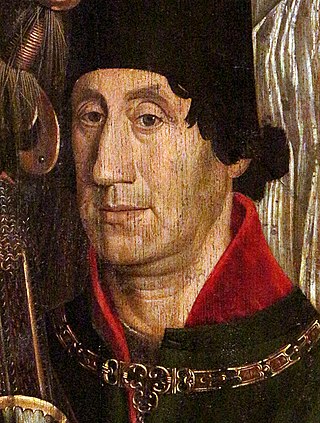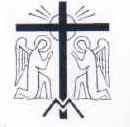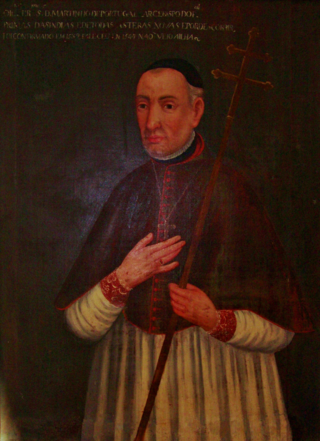
Afonso I of Portugal, also called Afonso Henriques, nicknamed the Conqueror by the Portuguese, and El-Bortukali and Ibn-Arrink or Ibn Arrinq by the Moors whom he fought, was the first king of Portugal. He achieved the independence of the County of Portugal, establishing a new kingdom and doubling its area with the Reconquista, an objective that he pursued until his death.

The Cathedral of Saint Mary Major, often called Lisbon Cathedral or simply the Sé, is a Roman Catholic cathedral located in Lisbon, Portugal. The oldest church in the city, it is the seat of the Patriarchate of Lisbon. Built in 1147, the cathedral has survived many earthquakes and has been modified, renovated and restored several times. It is nowadays a mix of different architectural styles. It has been classified as a National Monument since 1910.

Elizabeth of Aragon, more commonly known as Elizabeth of Portugal, was queen consort of Portugal who is venerated as a saint in the Roman Catholic Church.

Dume is a former freguesia and former bishopric in the municipality of Braga, northern Portugal, which remains a Catholic titular see.

The Monastery of the Holy Cross, also known as the Church of the Holy Cross, is a National Monument in Coimbra, Portugal. Because the first two kings of Portugal are buried in the church it was granted the status of National Pantheon. Founded in 1131 outside the protecting walls of Coimbra, the Monastery of the Holy Cross was the most important monastic house during the early days of the Portuguese monarchy. Saint Theotonius founded this community of Canons Regular of the Holy Cross of Coimbra and served as their first prior. The monastery and church were erected between 1132 and 1223. The monastery was granted numerous papal privileges and royal grants, which allowed the accumulation of considerable wealth, at the same time as it consolidated its position on the politico-institutional and cultural scene. Its school, with its vast library, was highly respected in medieval times and was a meeting point for the intellectual and power elites. Its scriptorium was used for the consolidation of royal power by King Afonso Henriques, thus it was not considered strange that he decided to be buried there.

Archbishop Aleixo de Menezes or Alexeu de Jesu de Meneses was a Catholic prelate that served as Archbishop of Goa, Archbishop of Braga and Viceroy of Portugal during the Philippine Dynasty.

Dom Peter, Duke of Coimbra, KG, was a Portuguese infante (prince) of the House of Aviz, son of King Dom John I of Portugal and his wife, Philippa of Lancaster, daughter of John of Gaunt. In Portugal, he is known as Infante Dom Pedro das Sete Partidas [do Mundo], "of the Seven Parts [of the World]" because of his travels. Possibly the best-travelled prince of his time, he was regent between 1439 and 1448. He was also 1st Lord of Montemor-o-Velho, Aveiro, Tentúgal, Cernache, Pereira, Condeixa and Lousã.

Cardinal-Infante Afonso was a Portuguese infante (prince), son of King Manuel I of Portugal and his wife Maria of Aragon.

The Canons Regular of the Holy Cross of Coimbra are a Catholic religious order of canons regular founded in Portugal in the 12th century. The follows the Rule of Saint Augustine.

The Diocese of Coimbra is a Roman Catholic diocese in Coimbra, Portugal. It is a suffragan of the Archdiocese of Braga.

Vasco Fernandes, better known as Grão Vasco, was one of the main Portuguese Renaissance painters.

The Order of the Immaculate Conception of Vila Viçosa is a dynastic order of knighthood of the House of Braganza, the former Portuguese Royal Family. The current Grand Master of the Order is Duarte Pio, Duke of Braganza, the Head of the House of Braganza.

The Order of Queen Saint Isabel is a Roman Catholic dynastic order of which the Grand Mistress is the Duchess of Braganza.

The Portuguese Catholic diocese of Viseu is a suffragan of the archdiocese of Braga. Its see at Viseu is in the Centro Region. The current bishop is António Luciano dos Santos Costa.

Santa Cruz is a former civil parish in the municipality of Coimbra, Portugal. In 2013, the parish merged into the new parish Coimbra. In 2001, its population was 6866 inhabitants, in an area of 5.56 km² that parallels the north (right) margin of the Mondego River, extending to the village of Adémia in Trouxemil.

Dom António de Ataíde, 1st count of Castanheira, was a childhood friend and favorite of King John III of Portugal. As an advisor to the King, he played a key role in Portugal's policies towards its colony of Brazil. He also served as a diplomat in missions to several European countries and was a Minister and member of the King's council.
Francisco de Soveral was a Portuguese prelate.

Tomás de Almeida was the first Patriarch of Lisbon, formerly Bishop of Lamego and later of Porto. Pope Clement XII elevated him to the cardinalate on 20 December 1737.

DomMartinho de Portugal, also known as Martinho of Portugal, was a Portuguese archbishop, the only Archbishop of Funchal, holder of the largest Catholic jurisdiction in the world, ever created, which had as suffragans the dioceses like Angra do Heroísmo, São Tomé, Santiago and Goa. From its area, the future Diocese of São Salvador da Bahia, would be dismembered and created in 1551.

Dom Miguel Pais Salomão, O.S.C. was a medieval Portuguese prelate, Bishop of Coimbra from 1158 to 1176.




















